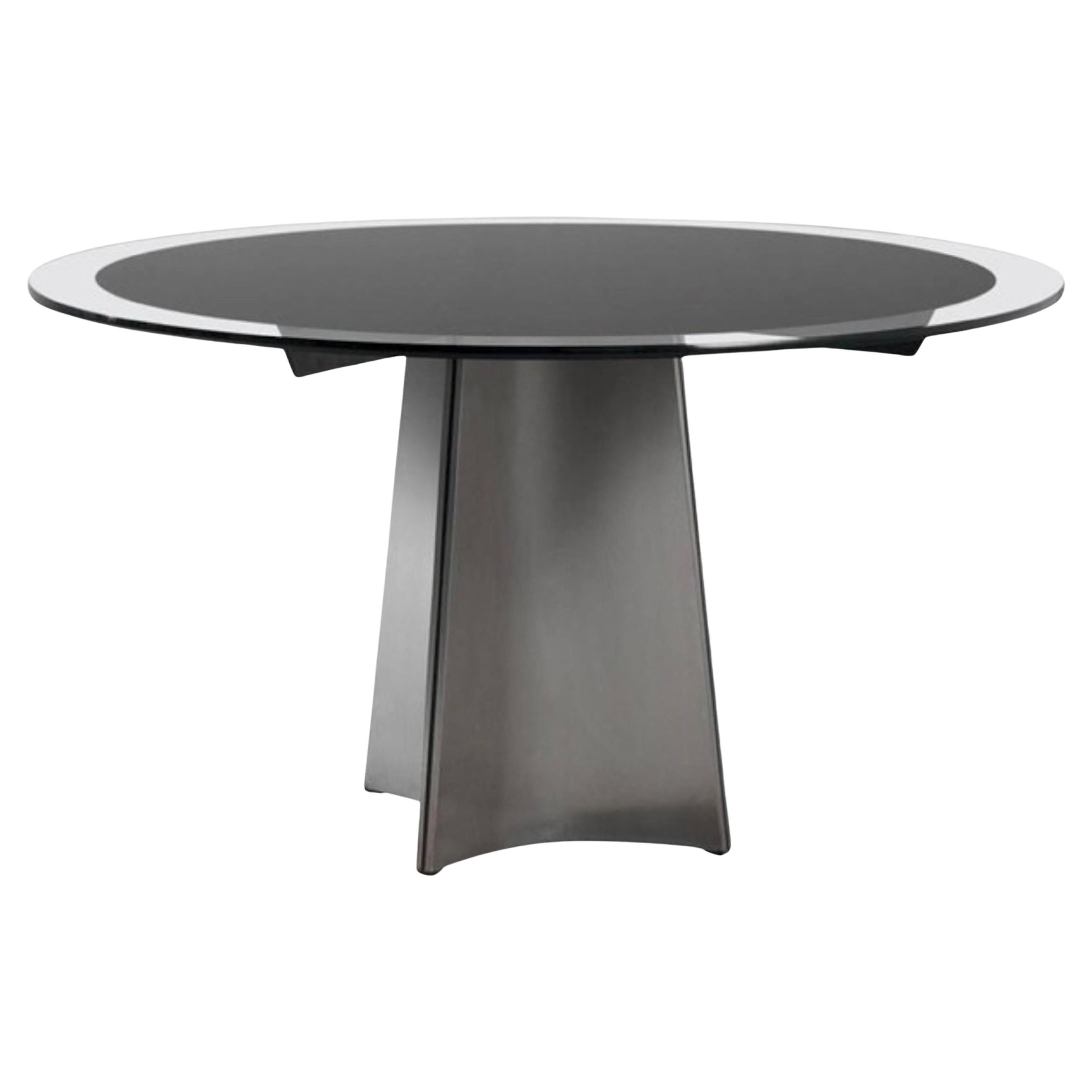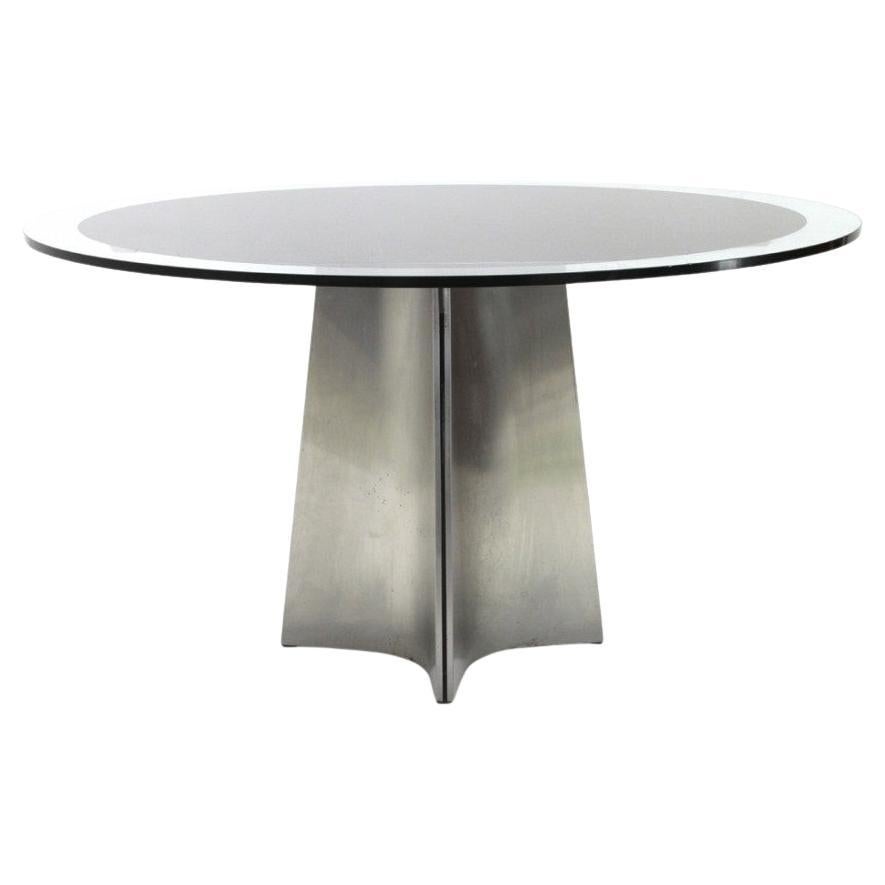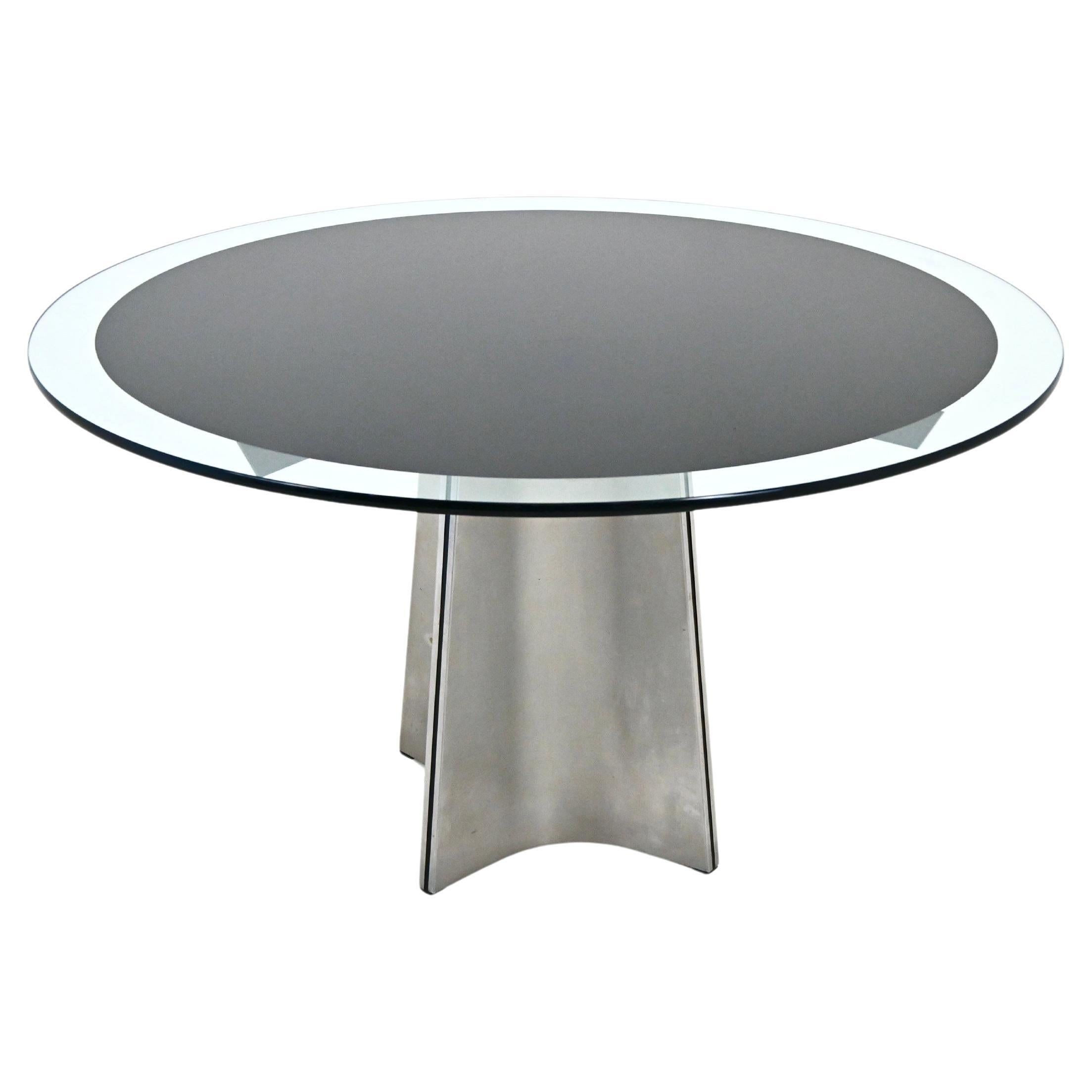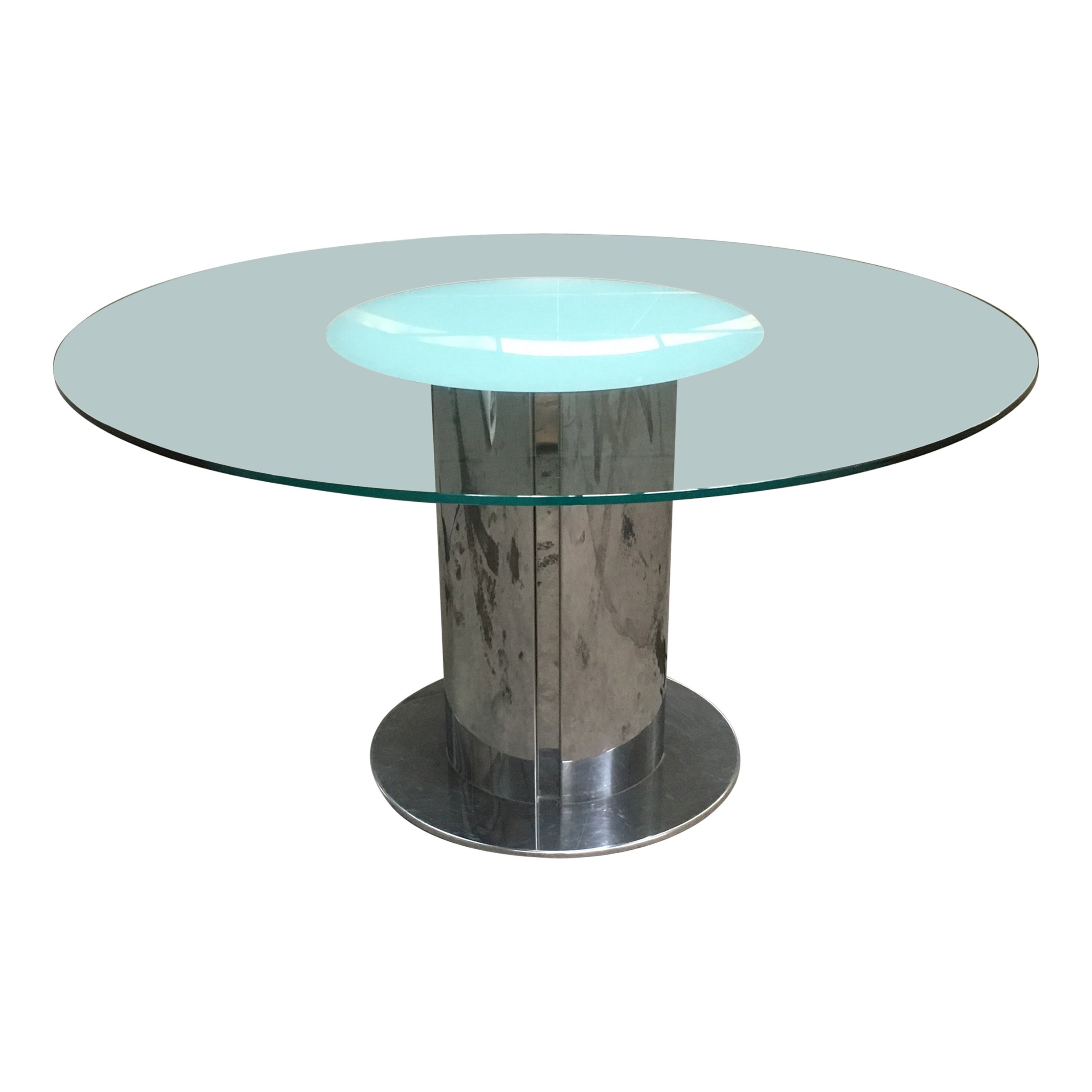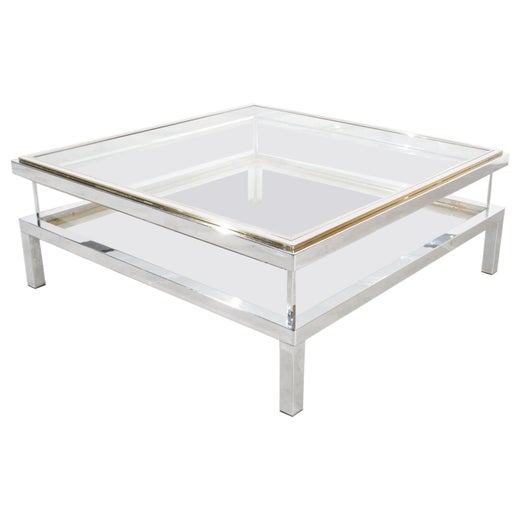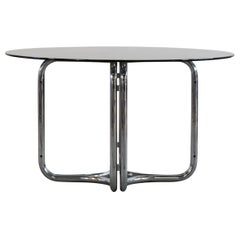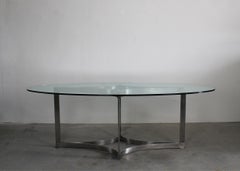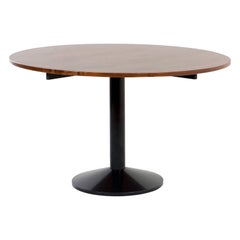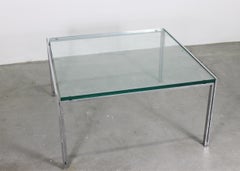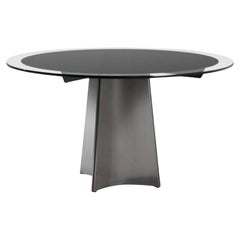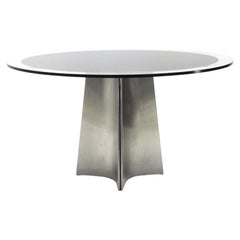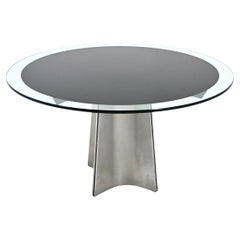Luigi Saccardo UFO Pedestal Table in Steel and Glass by Maison Jansen 1970s
About the Item
- Creator:Maison Jansen (Designer),Luigi Saccardo (Designer)
- Dimensions:Height: 27.56 in (70 cm)Diameter: 59.06 in (150 cm)
- Style:Mid-Century Modern (Of the Period)
- Materials and Techniques:
- Place of Origin:
- Period:
- Date of Manufacture:1970s
- Condition:Wear consistent with age and use.
- Seller Location:Montecatini Terme, IT
- Reference Number:1stDibs: LU5304229729092
Maison Jansen
The Dutch-born Jean-Henri Jansen (1854–1928) was only in his mid-20s when he set up his Parisian design business in 1880. By the time he died, Maison Jansen had become the world’s first international decorating firm. Today, it is still regarded as one of the most notable firms and period furniture manufacturers in history, with its vintage floor lamps, tables, dressers and other furnishings remaining in demand.
Maison Jansen initially came to international prominence in 1883 when the young Jean-Henri Jansen traveled to Amsterdam to participate in the International Colonial Exposition, an event that featured presentations by 28 different nations and was attended by over a million visitors. There he exhibited as part of the French pavilion and won the silver medal. This led to two prominent new clients: King William III of the Netherlands and King Alfonso XII of Spain.
Next was King Leopold II of Belgium for the interiors of the Château du Laeken, as well as commissions for Egypt’s King Farouk and Great Britain’s King Edward VII. Thanks to his participation in global expositions and fairs, Jansen expanded the renown of the firm so that its studios would reign in such major cities as London, New York, Buenos Aires, Cairo and many more.
Jansen was not only sought after for his taste but also for his custom period-inspired pieces. For example, in the Count and Countess de Revilla de Camargo’s Havana mansion, Jansen designed Louis XV–style furniture crafted from Cuban mahogany, enhancing Maison Jansen’s reputation as an expert maker. His custom furniture business was so successful that by 1900 he had opened his own atelier and employed around 700 artisans.
In the 1960s, the firm, then led by Stéphane Boudin, worked with Jacqueline Kennedy on the refurbishment of rooms in the White House, including such spaces as the Queens’ Sitting Room, which featured bright blue fabric and neoclassical details. In the 1970s, legendary French actor Alain Delon brought his sense of style to bear on the world of furniture design, when he created a series of pieces for Maison Jansen.
Maison Jansen continued to produce furniture designs through the 20th century, responding to shifting tastes from Art Nouveau to Modern Regency. The atelier and studio officially closed its doors in 1989.
Find authentic Maison Jansen sofas, lighting and other furniture today on 1stDibs.
- ShippingRetrieving quote...Shipping from: Borgo a Buggiano, Italy
- Return Policy
More From This Seller
View AllVintage 1970s Italian Space Age Dining Room Tables
Steel
Vintage 1970s Italian Post-Modern Dining Room Tables
Steel
Vintage 1950s Italian Mid-Century Modern Tables
Metal
Vintage 1970s Italian Post-Modern Center Tables
Steel
Vintage 1970s Italian Post-Modern Tables
Brass
Vintage 1950s Italian Mid-Century Modern Sofa Tables
Metal
You May Also Like
Vintage 1970s Tables
Aluminum
Mid-20th Century Italian Mid-Century Modern Tables
Aluminum
Vintage 1970s Italian Mid-Century Modern Dining Room Tables
Steel
Vintage 1970s Italian Mid-Century Modern Dining Room Tables
Metal
Vintage 1970s Italian Adam Style Dining Room Tables
Stainless Steel
Vintage 1960s Italian Mid-Century Modern Dining Room Tables
Stainless Steel
